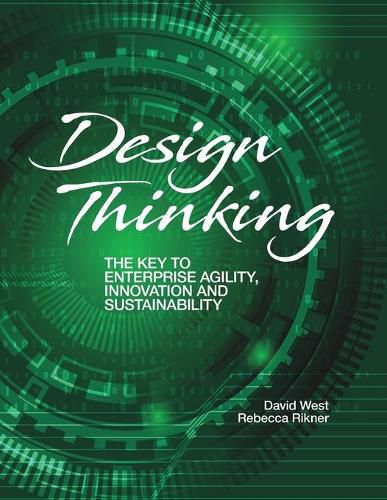Readings Newsletter
Become a Readings Member to make your shopping experience even easier.
Sign in or sign up for free!
You’re not far away from qualifying for FREE standard shipping within Australia
You’ve qualified for FREE standard shipping within Australia
The cart is loading…






This title is printed to order. This book may have been self-published. If so, we cannot guarantee the quality of the content. In the main most books will have gone through the editing process however some may not. We therefore suggest that you be aware of this before ordering this book. If in doubt check either the author or publisher’s details as we are unable to accept any returns unless they are faulty. Please contact us if you have any questions.
This is a book for Business, IT, and Design professionals responsible for assisting their organizations in the adoption and leveraging a design approach for innovation strategy and organizational transformation.
The influence and scope of Design Thinking is expandingrapidly. Numerous organizations are appointing Chief Design Officers (CDO) to lead innovation efforts and effect internal design cultures. Corporations like SAP, PepsiCo, and Microsoft are using design thinking to transform their feature-centric development cultures into user-centric ones. Accenture and McKinsey, among other global business consultancies have established design agencies to serve growing customer needs. Successful startups like AirBnB are establishing organizational cultures grounded in Design Thinking.
Design Thinking is an essential foundation for organizations dedicated to goals of innovation, adaptability, agility, and sustainability.
This book presents Design Thinking as a worldview that supports alternative ways of thinking about complex problems and their solution. Origins and applications of this worldview are provided in order to ensure a solid foundation for understanding and leveraging Design Thinking.
The second part of the book presents practical perspectives, principles, concepts, practices, and evaluation techniques in the form of 23 patterns. Each pattern is a focused discussion of one aspect of Design Thinking. The patterns are intended to supply tools to provide the means to accomplish organizational design objectives.
$9.00 standard shipping within Australia
FREE standard shipping within Australia for orders over $100.00
Express & International shipping calculated at checkout
This title is printed to order. This book may have been self-published. If so, we cannot guarantee the quality of the content. In the main most books will have gone through the editing process however some may not. We therefore suggest that you be aware of this before ordering this book. If in doubt check either the author or publisher’s details as we are unable to accept any returns unless they are faulty. Please contact us if you have any questions.
This is a book for Business, IT, and Design professionals responsible for assisting their organizations in the adoption and leveraging a design approach for innovation strategy and organizational transformation.
The influence and scope of Design Thinking is expandingrapidly. Numerous organizations are appointing Chief Design Officers (CDO) to lead innovation efforts and effect internal design cultures. Corporations like SAP, PepsiCo, and Microsoft are using design thinking to transform their feature-centric development cultures into user-centric ones. Accenture and McKinsey, among other global business consultancies have established design agencies to serve growing customer needs. Successful startups like AirBnB are establishing organizational cultures grounded in Design Thinking.
Design Thinking is an essential foundation for organizations dedicated to goals of innovation, adaptability, agility, and sustainability.
This book presents Design Thinking as a worldview that supports alternative ways of thinking about complex problems and their solution. Origins and applications of this worldview are provided in order to ensure a solid foundation for understanding and leveraging Design Thinking.
The second part of the book presents practical perspectives, principles, concepts, practices, and evaluation techniques in the form of 23 patterns. Each pattern is a focused discussion of one aspect of Design Thinking. The patterns are intended to supply tools to provide the means to accomplish organizational design objectives.